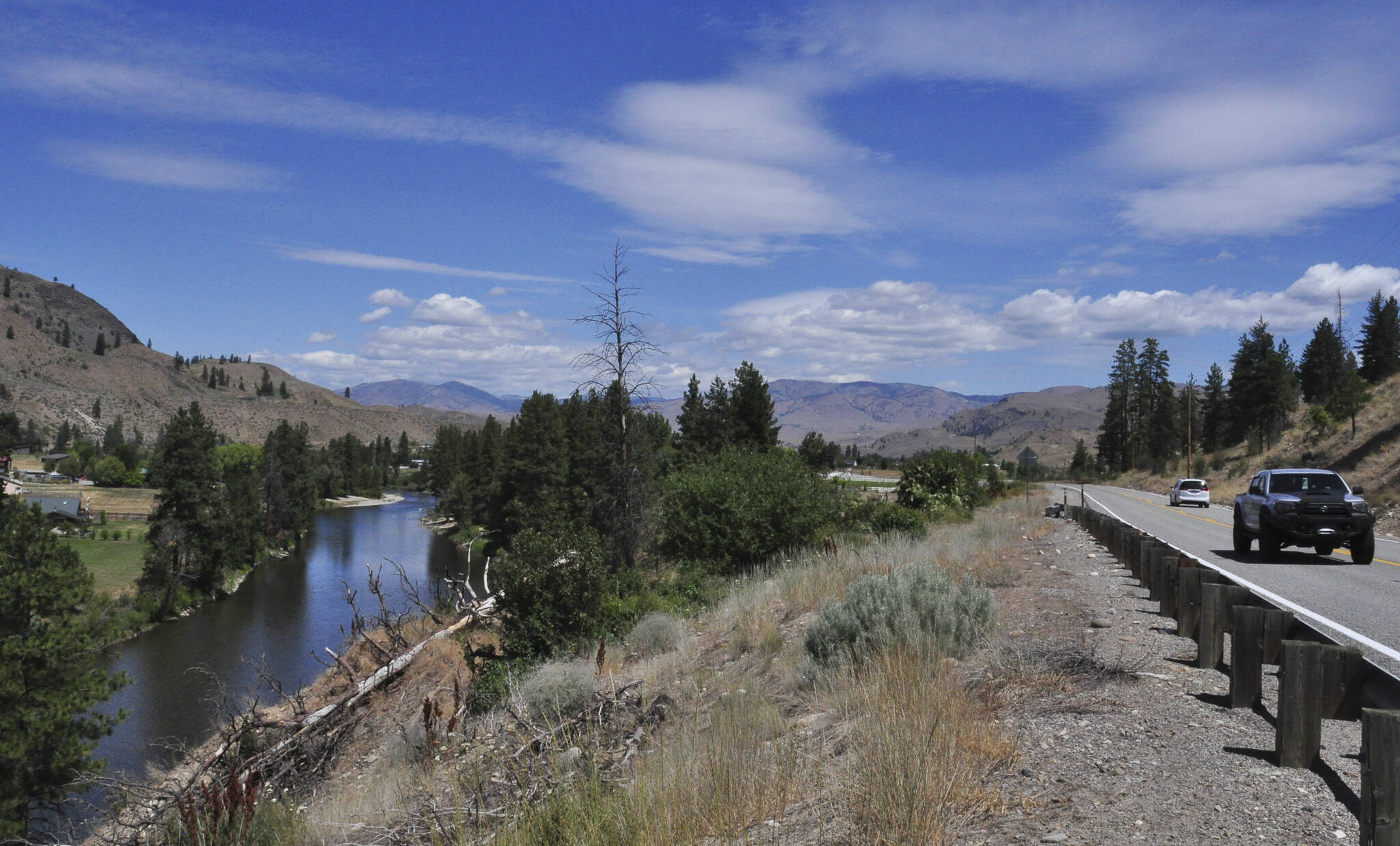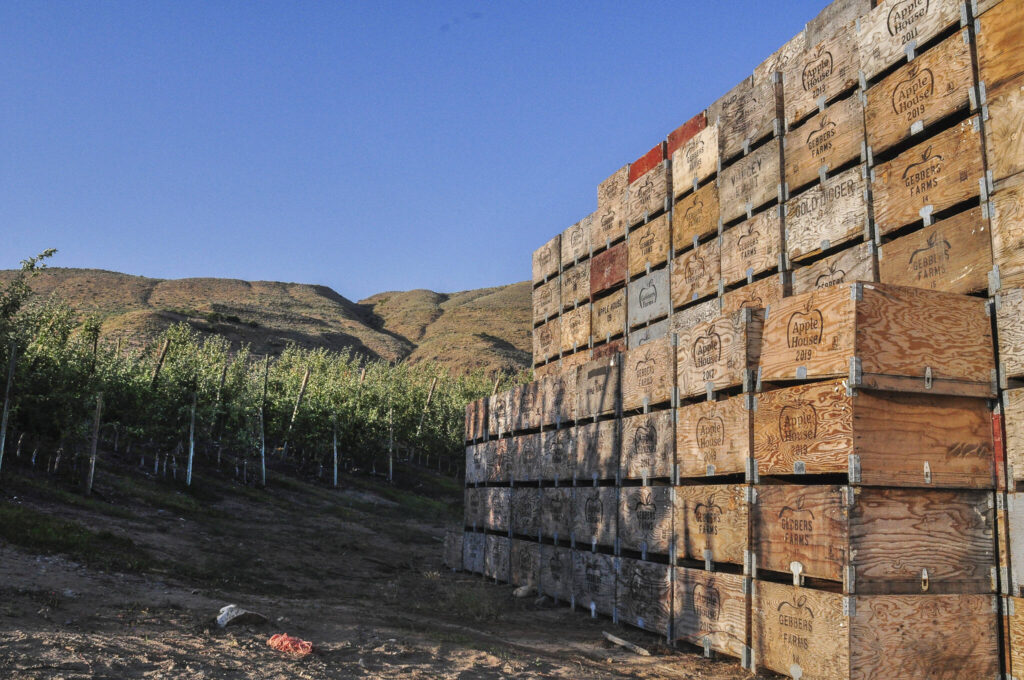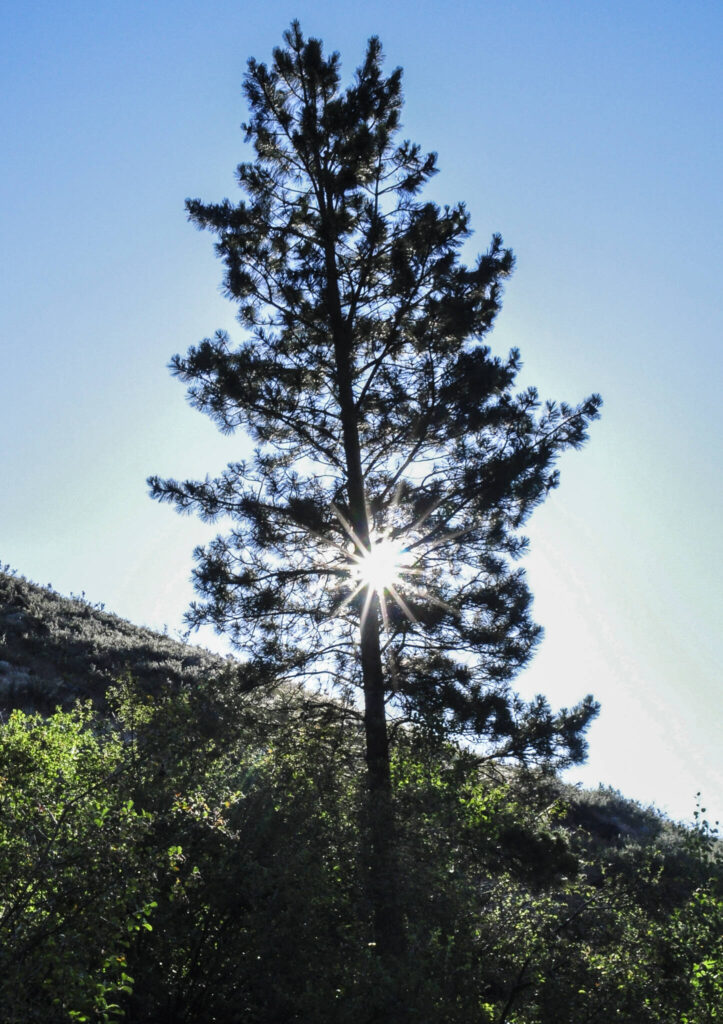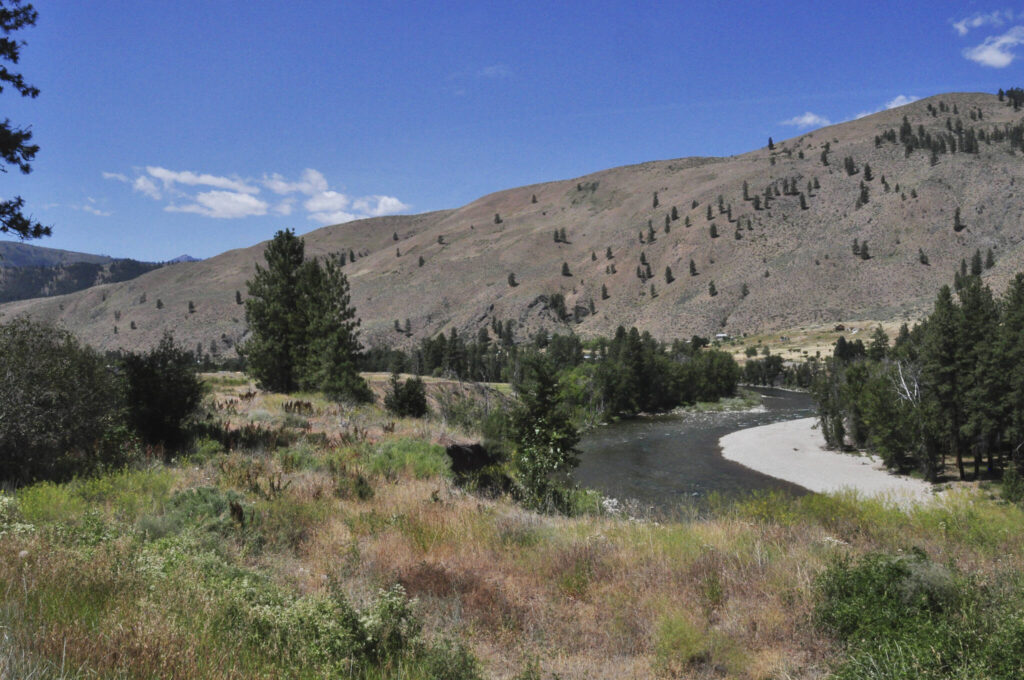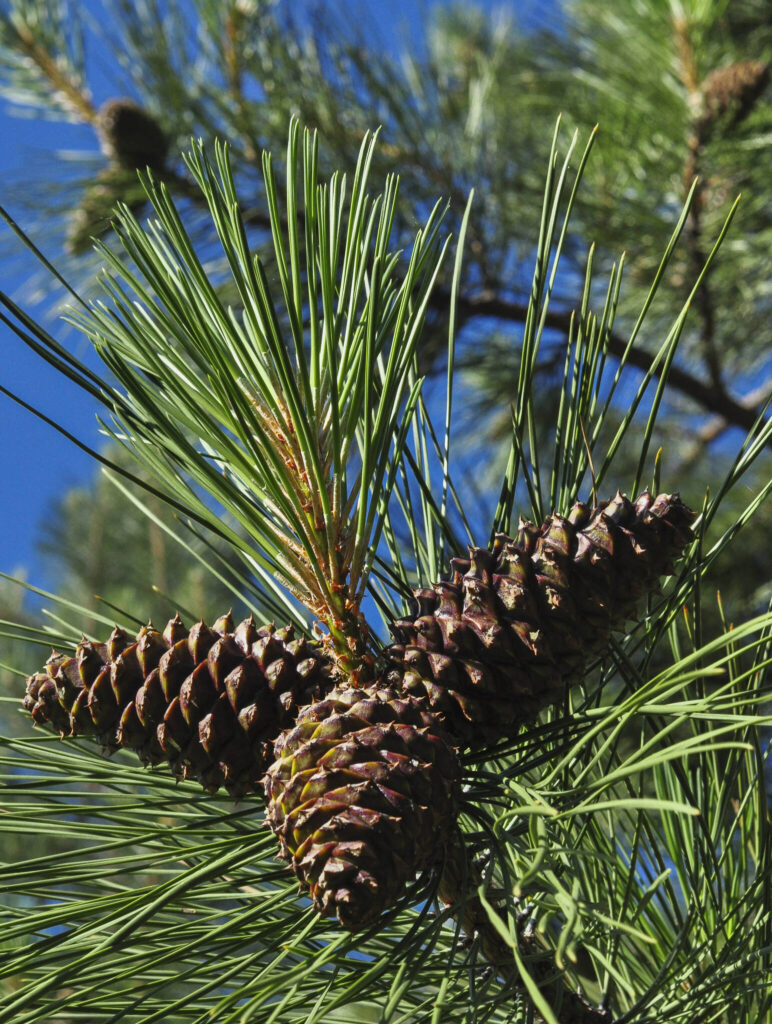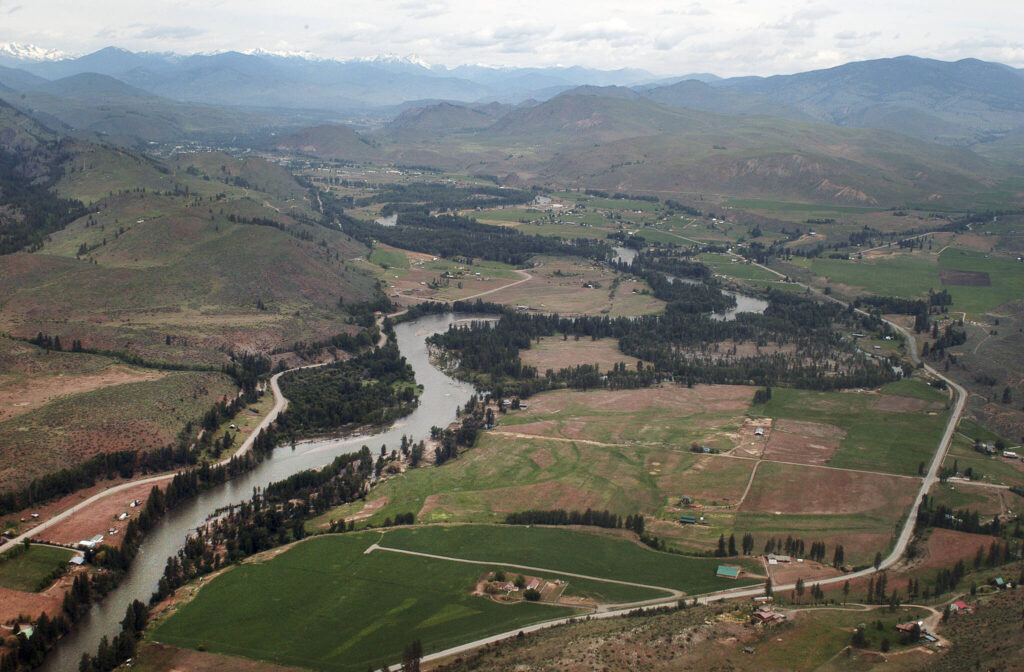Story by Janice Podsada.
If you’ve got an extra day and extra cash, don’t end your North Cascades Scenic Highway road trip at Diablo Lake.
Keep Going. Drive another 60-70 miles east and spend the night in Winthrop or Twisp, the heart of the Methow Valley.
When you head home, don’t backtrack. Instead, do the Cascade Loop through miles and miles of apple country. Stop at Lake Chelan for spectacular views of the 50-mile-long reservoir, visit Leavenworth, the Bavarian-themed burg. For a breather, pull into the Wenatchee River Viewpoint just off Highway 2 or make a 10-minute detour at Coles Corner for a stroll along Lake Wenatchee.
We left mid-morning from Everett for a two-day road trip with four hours of easy driving both days.
On the first leg, we connected with the North Cascades Highway near Burlington (after waiting for a train to cross). Highway 20 crosses the Cascade Mountains, following the ruts of an old wagon road carved into the cliffs in the late 1800s. Twisting and climbing through old-growth forests and mountain peaks, the route offers plenty of oohs and ahs.
But hurry, Highway 20 is only open from April to mid-November.
Here are some stops:
• At Newhalem, a 100-year-old company town owned by Seattle City Light, visitors can take a self-guided tour of the Gorge Dam and Powerhouse on the Skagit River. The Gorge Dam and its companions, the Diablo Lake and Ross dams generate a fifth of Seattle’s electricity.
• At the Diablo Lake overlook, drink in the sight of the turquoise-teal reservoir. Why so blue? Tiny particles of glacial rock that reflect green light mix with the blue-reflecting waters, creating the lake’s milky blue-green color.
• In Mazama, check out Methow Trails, 120-miles of trails. Cross-country ski them in winter or hike them in summer. In a bid to add some class, the locals changed the town’s name in the 1900s from Goat Creek to Mazama, thinking Mazama meant mountain goat in Greek. Nope, it’s actually a type of deer.
Day trips are a great getaway, but if you can squeeze in an extra day bed down in Winthrop or Twisp. Tour one town or both. (Look for Andrea Brown’s upcoming story about a visit to Twisp.)
An overnight stay cost me $150 for a basic, pet-friendly room at the Idle-A-While Motel in Twisp. The price included the $35 pet fee for Viggo, my rat terrier and trusty travel companion.
TREES A CROWD
After a good night’s sleep and day tour of Twisp, it was time to head home. To complete the circle, take Highway 153 south and then merge onto Highway 97 at Pateros toward Lake Chelan. For the final stretch, follow Highway 2 to Stevens Pass.
I was lucky enough to be a passenger on the loop. From the backseat, I took in the topography and the trees. The trees, the trees — you’d think I’d never seen trees before!
Crossing the Cascades, it hit me: We westsiders often take the shaggy red cedar, well-endowed Douglas fir and Big Leaf Maples for granted. Water is plentiful. The trees drink deep and bloom with abandon. Even the fog plays a crucial role, said Henry Adams, professor of forest ecology and forest management at Washington State University in Pullman.
“Getting water up that high (past 200 feet) is a real challenge for trees, so the fog goes a long way toward getting water to the tree tops,” Adams explained.
Once you cross to the east side of the Cascades, “it gets dry very fast. From my trips over Snoqualmie and through the Gorge, the east side of the Cascades seems even drier than the western side of the Rocky Mountains, which is where I live,” said Adams, who lives near Moscow, Idaho.
On the west side, which averages 66 inches of rain per year, trees compete for light, he said. On the west side, where the average is a meager 18 inches, trees compete for water. And so Ponderosa Pine and Lodge Pole Pine rule the eastern slopes. Built to withstand fire and drought, they’re a rangy, tightfisted bunch with thick bark and scaly cones. Unlike their west side cousins, there’s no room for extra branches or excess greenery. Pines “are very good at self-pruning; they drop everything (especially lower branches) that could catch fire,” Adams said.
The few Douglas Firs that dare to reside on the eastern slopes, can appear “downright ratty,” he said. “It looks like they’re having a bad hair day.”
As you leave the Methow Valley, the forest fades and irrigated tracts appear. Apple trees can be seen marching across the hillsides in military precision, planted in neat rows.
Appling is a year-round affair. As we rolled by in mid-afternoon, the sun at full tilt, I wondered where the apple tenders were. Turns out, most of the work they do in the spring and summer takes place in the morning before it swelters. In June, an apple is about the size of ping pong ball and measures a little over an inch tall. By August or September, it’s plump and ready to harvest. In winter, it’s time to prune.
WE’RE NO. 1
I have lived in Washington a good chunk of my life. But I couldn’t tell you how many apples the state harvests or how much fruit a single tree produces.
Fortunately, the Washington Apple Commission has all the answers.
“Washington actually harvests between 10-12 billion pounds of apples a year, if you can believe it!” they told me in an email. (New York state is second with an annual bounty of about 1.4 billion pounds.) If I had a nickel for each!
Apple ranchers pack a lot of trees onto one tract. In the old days they could fit up to 360 trees per acre. Today using a trellis-growing system, they can plant nearly 1,500 trees on the same patch. (An acre is roughly the size of a football field.)
Yield varies by tree size. The 30-footers can produce up to 900 pounds of apples a year, while the 15-foot varieties, can yield up to 450 pounds. The smallest trees, which stand just 8-feet tall, can still sprout an impressive 200 pounds.
Last year, Washington’s 300 commercial apple growers sold more than $2 billion worth of apples. That’s less than the $189 billion the high tech sector adds to the state’s economy. But hey, which is tastier? A bite of a Honey Crisp or a byte of big data.
HAD YOUR FILL OF APPLES?
Starting in July, pick your own organic apples, blueberries or lavender at Chelan Ranch at 90 Chelan Ranch Rd. Or book ahead and stay the night.
After you’ve oggled Lake Chelan, it’s about an hour’s drive to Leavenworth. En route,swing by Miller Orchard fruit stand in Peshastin for fresh eggs and, in-season, apples and pears.
In search of her Bavarian roots, Anne Trent of Everett, spent the afternoon in Leavenworth. Trent was impressed by the assortment of cuckoo clocks; her nine-month-old son, Isaac, was impressed by a Lederhosen-style onesie. “It was so much fun,” she said. “I want to go back.”
If you leave town by 3 o’clock, you might be able to reach the Sultan Bakery before it closes at 5:45 p.m. Order the turkey dinner — mashed potatoes, cranberry sauce, plus a side of steamed broccoli and carrots, and you won’t have to cook dinner when you get home.
And for dessert?
Hopefully, you found time to stop and pick up some apples.
Janice Podsada is a freelance writer and former employee of the Daily Herald. She can be reached at jpod2024@gmail.com
This story originally appeared in Sound & Summit magazine, The Daily Herald’s quarterly publication. Explore Snohomish and Island counties with each issue. Subscribe and receive four issues for $18. Call 425-339-3200 or go to soundsummitmagazine.com.f
IF YOU GO:
Check out the Cascade Loop website for maps and more info: cascadeloop.com
Talk to us
> Give us your news tips.
> Send us a letter to the editor.
> More Herald contact information.
